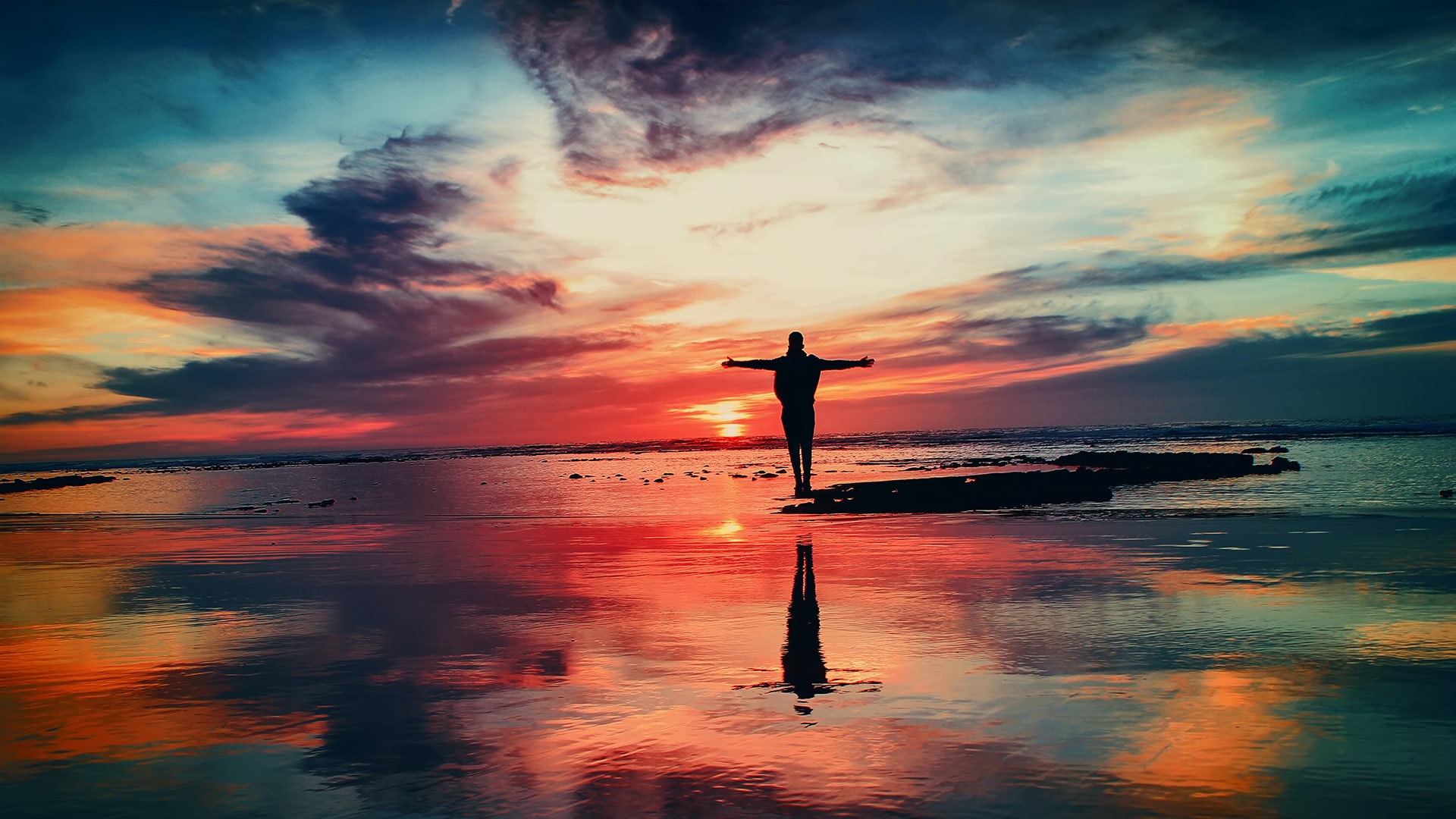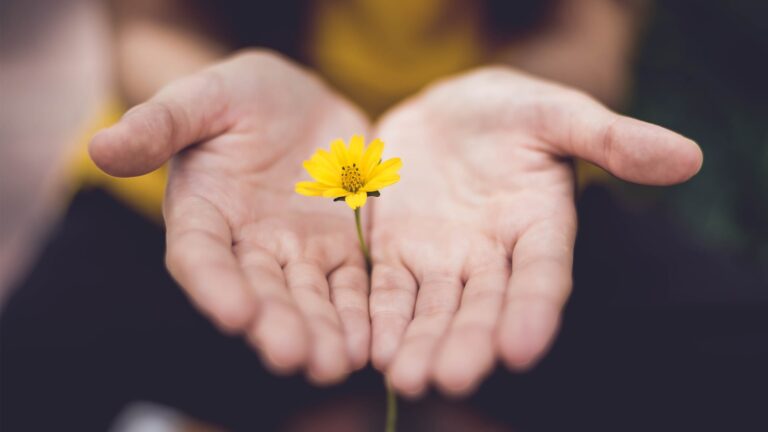Recently my friend told me she had been on a course located in a natural environment, she described what they did on it, and how much she enjoyed it. We both concluded that it was very mindful and that the natural environment facilitated the mindfulness aspects of the course. But what made this mindful and what is mindfulness in nature?
What is mindfulness in nature?
Is mindfulness in nature just walking through the forest with bare feet? Is it sitting on the grass and looking into the sky with no care in the world? Or falling asleep under the stars?
Well, it could be all these, but mindfulness in nature is more than this, it’s more intentional. Before we get onto what it is, let’s explore the benefits.
Being out in nature helps us feel better
There are an increasing number of evidence-based studies. These studies highlight how important it is to slow down and be more present. Studies also show how this can alleviate our feelings of anxiety, depression and stress.
Think about a time when you might have been by the sea, or beside a river, or just sitting on a grassy area. How did you feel? You probably had lots of other things going on at the same time. Distractions may be taking you away from focusing on the nature aspect. However, being out in nature just naturally, generally helps us to feel better. It helps us to feel more connected and more aware of the beauty around us, which we often don’t have time to experience to its full potential.
How would you like to benefit even more from being in nature? How would you like to be more intentional and less distracted? Let’s explore this more…
Practical exercise: How to be mindful of nature
Like all mindfulness exercises, this is all about awareness. Paying attention on purpose. Why not try out the following exercise the next time you go for a walk or the next time you are in a natural environment?
Step 1:
Decide to spend 30 minutes or so walking slowly outside. Perhaps this is a walk that you go on every day as part of your routine to get to your destination. Perhaps it’s a new walk that you have never been on before in the countryside, or by a gently flowing stream.
Step 2:
Normally we tend to walk with an intention – we are walking to get somewhere else, or perhaps our intention is just simply to seek pleasure from our walking experience. This time when you take your mindful walk, I would like you to simply aim to let go of all intention. Other than awareness, and simply paying attention to your environment and how you are feeling.
You may notice yourself either enjoying or not enjoying your walk. Do you feel wet, hot, cold or tired? You might feel happy, excited or energised. Just simply notice how you are feeling.
There is no judgement. Whatever you are feeling and whatever you notice is okay – you are not trying to change it in any way. Simply become aware of it, acknowledge it and accept it.
Step 3:
Now try and bring awareness to the textures around you. As you walk, how do your feet feel on the various textures of grass, pavement or soil? What do you notice about the various shades of colours around you? You might want to try this out during different seasons of the year and simply notice how the colours change around you. Notice the leaves turning from brown to green or yellow to red.
Notice how the air feels against your skin. Is it warm or breezy? Is it still or is it cold?
Step 4:
Now bring awareness to the sounds around you. What do you hear? How do the sounds change as you walk away from them or towards them? Can you hear other sounds in the distance? Does the sound of your steps change as you walk on different surfaces?
Step 5:
Now I would like you to scan through your body and how that feels. Bring awareness to the physical sensations in your body, starting with your feet, all the way up to the top of your head.
Take time to notice how each part of your body is feeling. Noticing the sensations in your body, the textures you can feel of your clothes on your body.
Can you feel the soles of your feet in your shoes, moving to the feeling of your top on your back and your arms? Just notice the sensations and accept them without judgement. This is all you are simply doing, noticing and being aware.
Perhaps even use your body to experience the textures in nature by touching the leaves or trees you see in front of you. Or let the water run over your hand or bare feet. How does that feel? Does it feel cold, or wet? Can you feel the various ridges of the bark? Can you notice any patterns in your natural environment?
Continue to do this and experience the natural environment. Notice any feelings of hurrying this experience? Accept them as feelings and let go when you feel ready to let go. This is time for you. Time in nature. Time to heal and time to just simply be present.
Hints and tips: Practising mindfulness in nature
When exploring mindfulness in nature you might want to try these hints and tips to get some more from your experience:
- Find a natural environment that really inspires you.
- Explore a place where you can rest for a while and take in your surroundings, as well as areas where you can walk and explore.
- Use all your senses: sight, smell, sound and taste (if appropriate) to explore your surroundings. Notice if there are changes or if this stays the same when you move around your environment.
- If you enjoy journaling, you could journal about your experience and some of the thoughts and feelings you experienced in your natural environment.
- Try and allocate time to help ensure you are not going to feel rushed so that you can fully experience nature, without feelings and thoughts of having to be somewhere else.
Guided meditations
If you feel that you would benefit from a guided nature meditation experience, there are some fantastic online walking meditations. YouTube is an excellent resource for this.
If you can’t get out in nature or you simply don’t have the time but would like to experience the benefits, I often use mindfulness and nature meditations. Not only to help me relax and connect with nature but also to help create that feeling of being grounded, rooted, still and present.
These meditations are great, especially when everything else around me feels a little bit chaotic. My favourite meditation is The Mountain Meditation by John Kabat Zin. I have included my own personal recording of this meditation as a gift to you – click here to access it.
Wishing you a wonderful day,
Sarah x
A bit about the author…
Sarah Makinde is a Business Psychologist, Mindfulness Teacher and Cognitive Behavioural Hypnotherapist. She has over 20 years of experience in the corporate environment and after going through her own journey with stress, anxiety and overwhelm, is passionate about helping her clients with similar issues.





